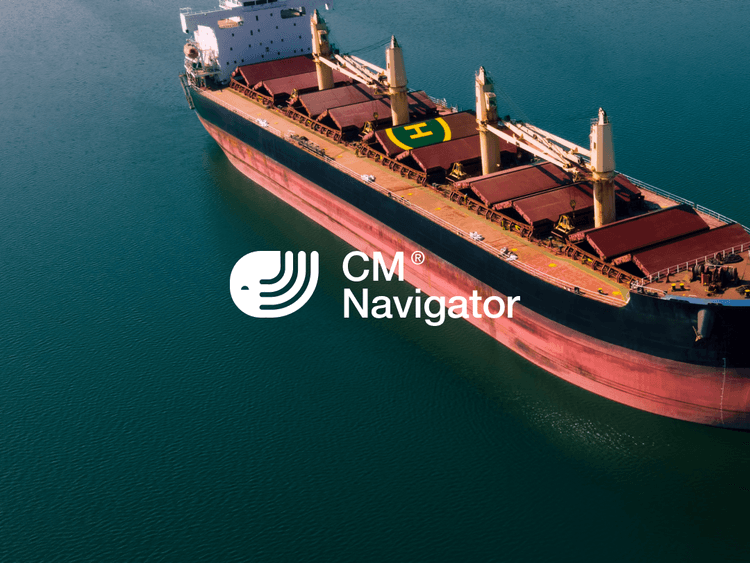Increased transparency in dry bulk freight markets

How instant access to dry bulk freights impact physical commodity markets
Mar 12, 2024
By, Anders Valentin Vogt and Donatas Jankauskas
Introduction
Traditionally, the shipping markets are characterised by a high degree of opacity and exclusivity, predominantly governed by a limited number of shipowners situated in e.g. Greece, Monaco, or Denmark, distant from the demand centres for freight services. Considering the inelastic nature of vessel supply from an economic perspective, it is advantageous for vessel owners to prefer pricing strategies based on an individual transaction basis. This approach enables shipowners to fully gauge the extent of market demand. Consequently, this method of price discovery has historically been in the favour of the freight sellers.
Advancements in technology have facilitated a paradigm shift in the methodology of freight pricing. Increased transparency within the dry bulk freight markets is transforming the dynamics of the physical commodity markets. Innovations such as new freight calculators and comprehensive freight- and CFR matrices, designed specifically for the use of freight buyers, are changing the operational strategies of commodity traders. These tools have been instrumental in reducing the time required for price discovery and thus influencing the pace of the decision-making processes.
This blog post explores the implications of this augmented transparency, concentrating on its impact on decision-making, risk management, market efficiency, liquidity, and the technological innovations driving these changes.
The Critical Role of Freight Rates in Commodity Trading
In the world of commodity trading such as grains, fertilizers, cement, steel etc, the cost of freight constitutes a significant component of the CFR price and is often the deciding element of the total cost which determines the most competitive origin for a given destination. Examples of this include the transportation of corn from Brazil to China, where freight costs are approximately 20% of FOB cost (200 USD/PMT FOB and 40 USD/PMT) freight, or cement clinker from Turkey to West Africa where freight is around 50% of FOB cost (50 USD/PMT FOB and 25 USD/PMT).
Historically, acquiring accurate freight rates has been a complex and cumbersome process, characterized by multiple stages, discretionary pricing, and considerable delays. This has typically represented a notable information scarcity for most commodity traders without extensive in-house freight departments. However, the introduction of online platforms providing access via websites or API to real-time data on dry bulk freight rates has started to even out the competitive landscape.
These platforms provide commodity traders with comprehensive insights into the constantly moving freight markets, covering all major deep-sea routes on a global scale. A dry bulk freight matrix or calculator empowers traders with the capability to instantly evaluate shipping costs, thereby facilitating the comparison of Cost and Freight (CFR) prices to determine competitiveness at the destination. Consequently, this leads to noticeably faster and more accurate cost calculations. The capacity to programmatically examine hundreds of freight combinations changes the role of the trader, reducing the amount of time devoted to price discovery and increasing the focus on market analysis and the making of strategic decisions.
Volatility
The freight markets are characterized by volatility, a consequence of the inelastic nature of supply. Instances, where an oversupply of ships is observed for one week, can rapidly shift to a shortage, shortly after. An illustrative example of this volatility can be observed in the East Coast South America (ECSA) to the Mediterranean trade routes for handysize grain trades. Taking November 2023 as an example, there was a 100% increase in vessel hire rates from the beginning to the end of the month. In general, freight market volatility has increased in recent years thereby creating substantial trading opportunities. For instance, comparing the standard deviation of freight rates for Handysize vessels in 2019 and 2023, considering these years to approximate 'normal' conditions outside of the COVID-19 pandemic, reveals this increase in volatility; the Handysize Baltic Index recorded a standard deviation of 1873 in 2019 compared to 2261 in 2023, indicating a 20% increase in volatility. During the COVID years, the yearly standard deviation surged to 7355, marking a 392% increase in volatility. There is a tendency that larger vessel types show greater volatility, implying that larger standard deviations are to be expected for these vessel sizes.
Technological Innovations Impact on Decision-Making
The incorporation of advanced analytics into an organization's proprietary data models enables commodity traders to refine their strategic approaches and enhance the accuracy of predictions, particularly for short-term forecasts applied in trading within the commodity futures market, where efficiency is critical. McKinsey & Company's report, "The Future of Commodity Trading," posits that the application of granular data in the realm of commodities trading has the potential to amplify revenues and profitability by leveraging short-term market inefficiencies. These technological innovations enable traders to make informed decisions quickly, enhancing their ability to manage risks associated with price volatility and shipping costs. Such technological advancements and increased price transparency can lead to greater liquidity. This is attributed to the lowering of barriers to market entry and the fostering of a more competitive trading landscape, as improvements in price discovery mechanisms and overall market efficiency are achieved.
The Future of Commodity and Freight Trading
As the commodity trading landscape continues to evolve, the significance of technology in enhancing transparency and operational efficiency is becoming more pronounced. The availability of real-time freight information through advanced online platforms exemplifies the transformative impact of technological innovations on the industry. Looking ahead, it is anticipated that the integration of machine learning and data analytics will intensify capitalizing on the growing volume of data accessible in shipping and commodity markets in the future.
Conclusion
The trend towards increased transparency within dry bulk freight markets, driven by technological innovations, is transforming the physical commodity trading industries. Instant access to critical freight rates has not only enhanced market efficiency but also improved risk management and facilitated more informed decision-making among commodity traders. As technology continues to play a central role in the evolution of the industry, the potential for innovation remains extensive, promising a future where market participants can operate with exceptional insight and efficiency.
References:
McKinsey & Company. (n.d.). The future of commodity trading https://www.mckinsey.com/industries/electric-power-and-natural-gas/our-insights/the-future-of-commodity-trading
McKinsey & Company. (n.d.). Data mining for miners: Using analytics for short-term price movement forecasting https://www.mckinsey.com/industries/metals-and-mining/our-insights/data-mining-for-miners-using-analytics-for-short-term-price-movement-forecasting
Recent Articles

Article
Historical Data in Commodity Markets
Mar 15, 2024
In the complex world of commodity trading, the saying "history repeats itself" serves not merely as a philosophical thinking but as a foundational principle that supports investment and trading strategies. This is particularly relevant in...

Article
Increased Transparency in Dry Bulk Freight Markets
Feb 05, 2024
Shipping markets have traditionally been opaque and closed, controlled by relatively few market participants placed in locations far away from demand for freight services, e.g. Greece, Monaco or Denmark. Given that ship supply in ...

Article
Agricultural Supply and Demand Forecasting
Jan 02, 2024
In the global agricultural commodity markets, the ongoing ability to follow and forecast crop progress with accuracy is not just an advantage; it's a necessity to be able to compete. The interplay of multiple factors makes the ‘supply and demand dynamics’ complex...

